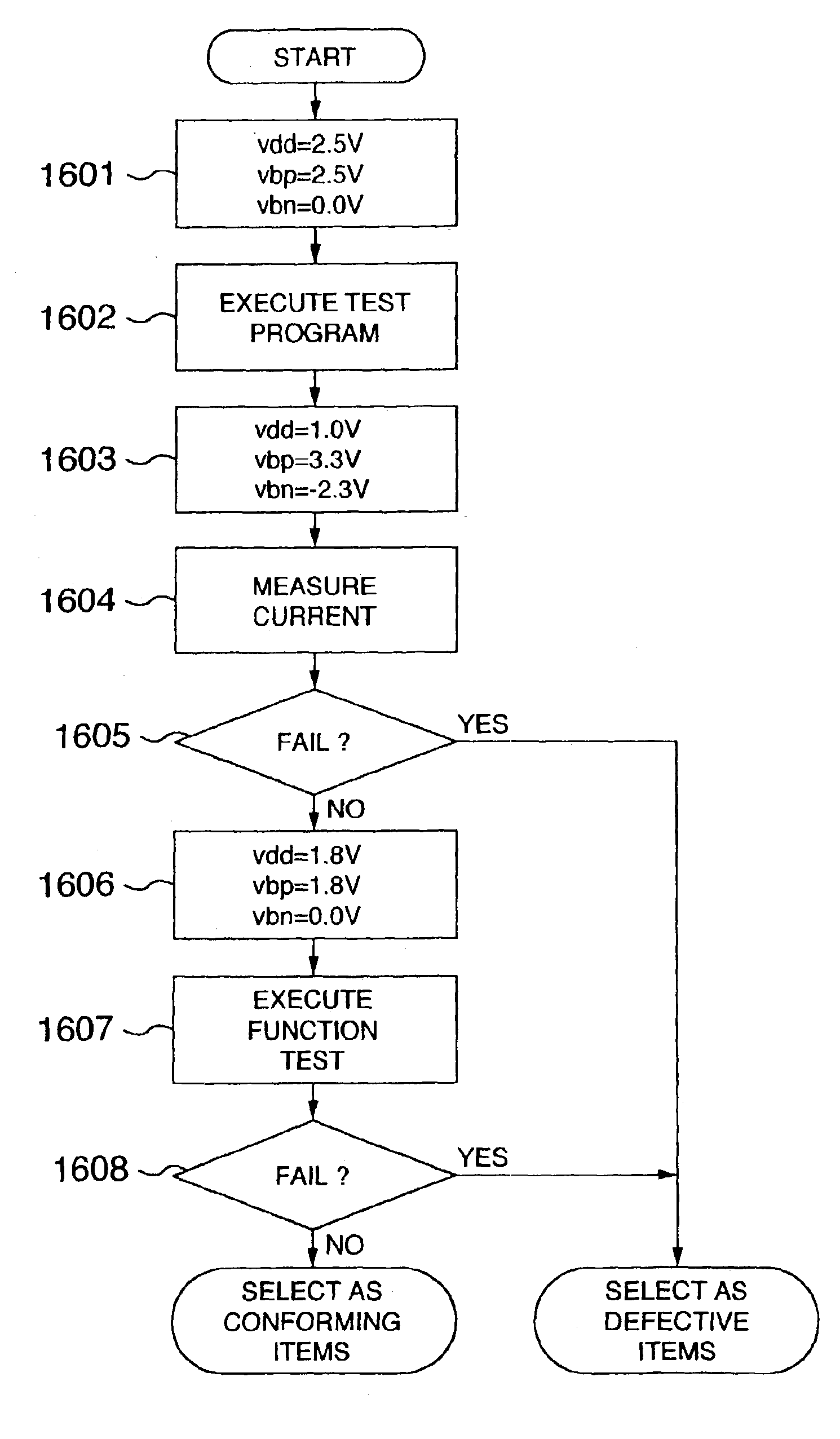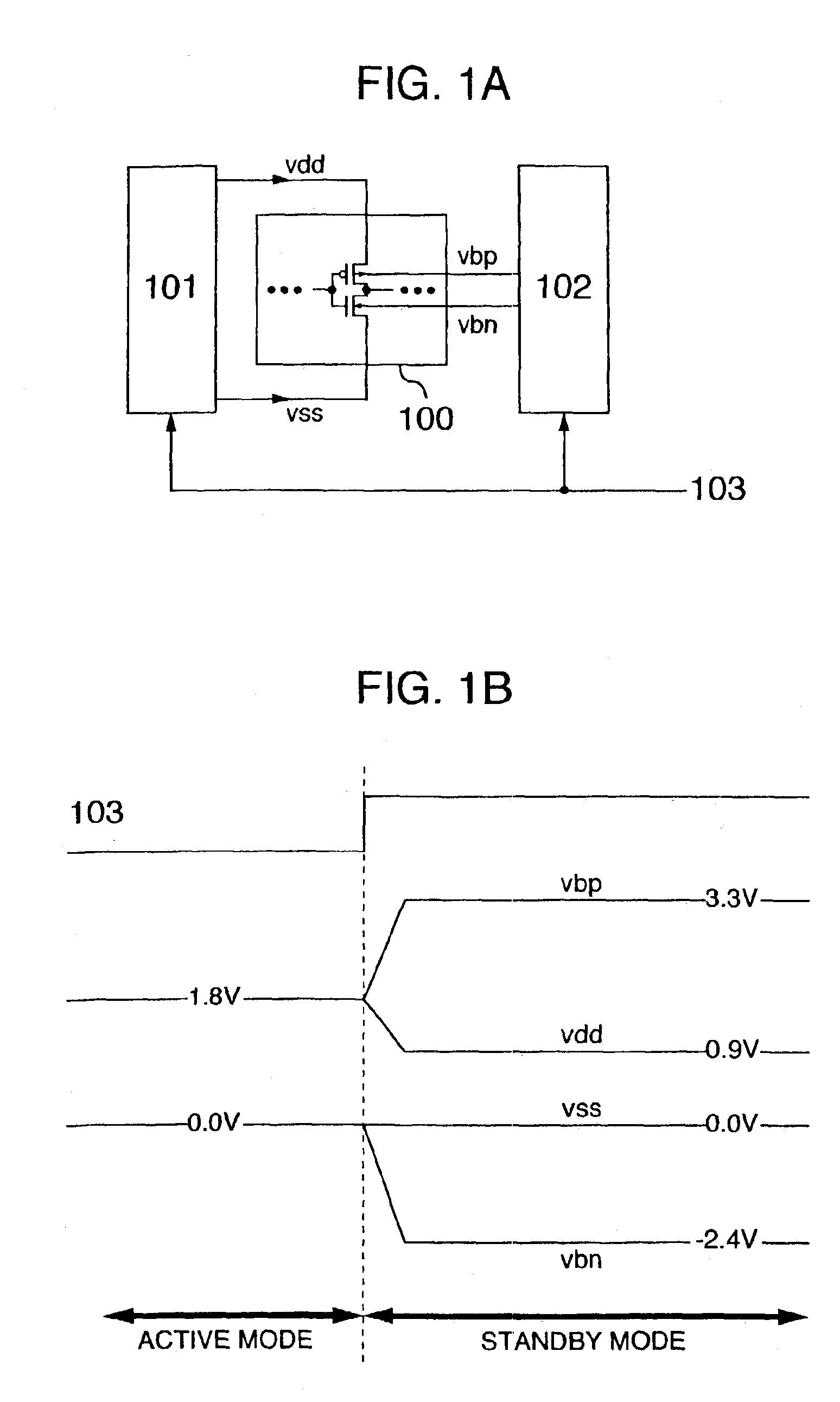Semiconductor integrated circuit apparatus
a technology of integrated circuit and semiconductors, applied in the direction of power consumption reduction, pulse technique, instruments, etc., can solve the problem that the application of a deep substrate bias does not have sufficient effect of reducing leakage current, and achieves the effects of enhancing the dibl effect, reducing drain voltage, and increasing the threshold voltage of the mos transistor
- Summary
- Abstract
- Description
- Claims
- Application Information
AI Technical Summary
Benefits of technology
Problems solved by technology
Method used
Image
Examples
Embodiment Construction
[0062]FIGS. 1A, 1B show a basic embodiment of the invention. Reference characters vdd designate a power supply voltage, vss a ground voltage, vbp a substrate bias voltage of a PMOS, vbn a substrate bias voltage of a NMOS, numeral 100 a circuit including a MOS transistor, numeral 101 a power supply voltage control circuit, numeral 102 a substrate bias control circuit, and numeral 103 a mode signal.
[0063]When the mode signal line 103 is “L”, a voltage of 1.8 V is applied as vdd and a voltage of 0 V as vss by the power supply voltage control circuit 101. Also, a voltage of 1.8 V is applied as vbp and a voltage of 0 V as vbn by the substrate bias control circuit 102. Thus, the circuit 100 enters an active mode and become capable of high-speed operation.
[0064]In the case where the mode signal 103 is “H”, on the other hand, a voltage of 0.9 V is applied as vdd and 0 V as vss by the power supply voltage control circuit 101. Also, a voltage of 3.3 V is applied as vbp and a voltage of −2.4 V...
PUM
 Login to View More
Login to View More Abstract
Description
Claims
Application Information
 Login to View More
Login to View More - R&D
- Intellectual Property
- Life Sciences
- Materials
- Tech Scout
- Unparalleled Data Quality
- Higher Quality Content
- 60% Fewer Hallucinations
Browse by: Latest US Patents, China's latest patents, Technical Efficacy Thesaurus, Application Domain, Technology Topic, Popular Technical Reports.
© 2025 PatSnap. All rights reserved.Legal|Privacy policy|Modern Slavery Act Transparency Statement|Sitemap|About US| Contact US: help@patsnap.com



